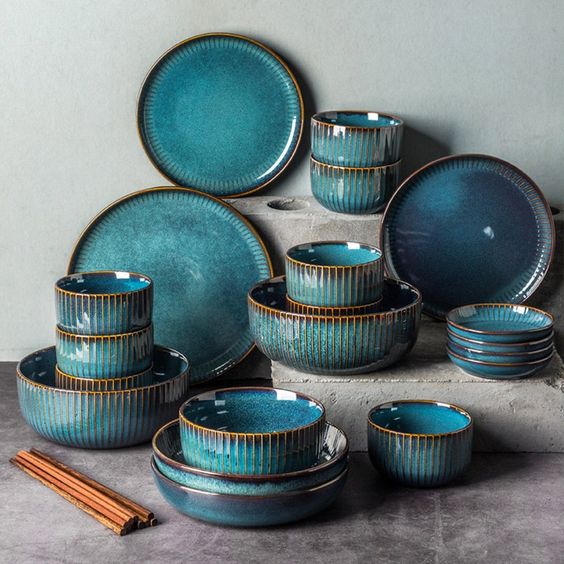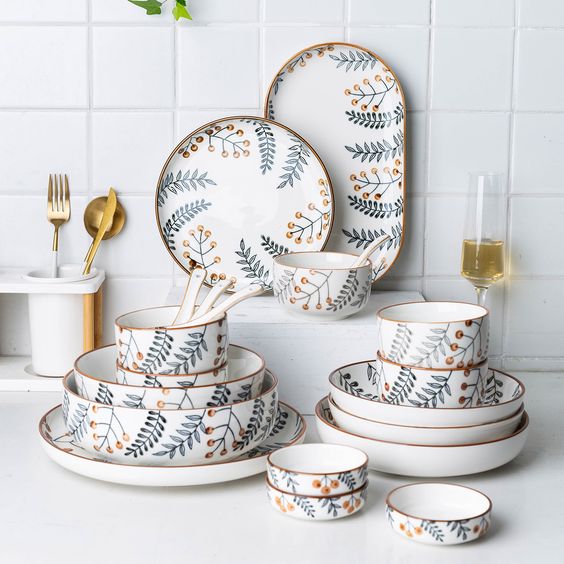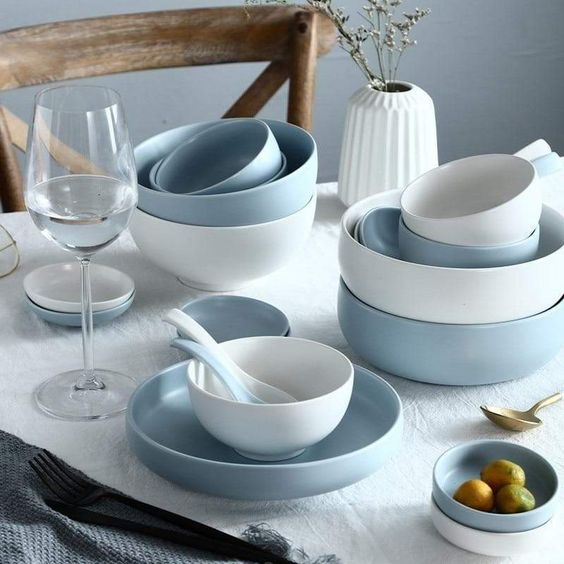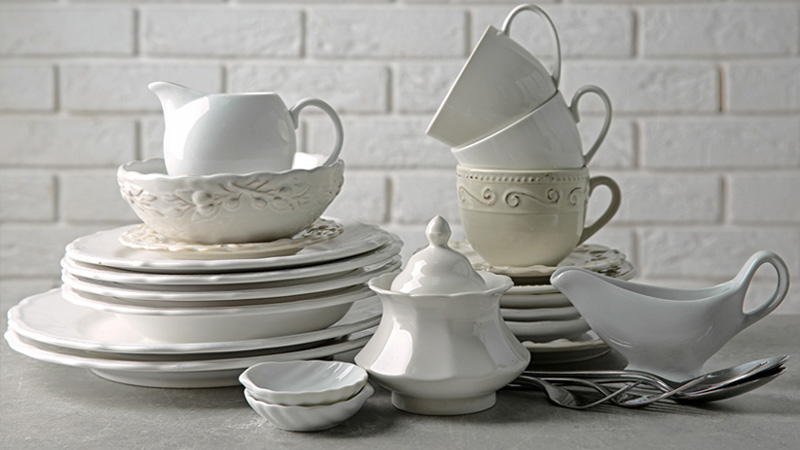Queenangelo.com – You may be wondering what the difference is between ceramic and porcelain dinnerware. There are many similarities between both materials, and many consumers can’t tell the difference. Porcelain is much harder than stoneware, while ceramic is usually less porous. In addition to their differences, these materials are also more expensive. You should always check the materials’ individual specifications to determine the type of dinnerware you need. If you want to get more information, read on!
Features of Ceramic and Porcelain Tableware
Ceramic and porcelain dinnerware have distinct features. While ceramic dinnerware tends to be thicker, porcelain dinnerware has a more delicate appearance. Ceramic dinnerware is more suitable for everyday place settings, while porcelain is perfect for more formal dining. For the most part, ceramic dinnerware is more expensive than porcelain. Porcelain dinnerware will last much longer than ceramic and will generally be more durable. In addition, porcelain dinnerware will generally be more durable and withstand high temperatures.
Porcelain is both attractive and durable. A special set of fine porcelain is often purchased by families. Porcelain is typically made from kaolin, feldspar, quartz sand, or other materials. Porcelain is fired at temperatures above 2,300 degrees Fahrenheit to achieve its luster and durability. Because porcelain is so durable, it is used for everyday dinners as well as for more formal occasions.

Whether you’re buying porcelain for everyday use or for special occasions, the answer is simple: porcelain is the best choice for everyday use. Porcelain is stronger and more durable, while ceramic is better for serving. Porcelain is best for baking, but may not be durable enough for the purpose. For formal dining, porcelain is the way to go. However, porcelain is expensive. In addition, it will not scratch or chip easily and will not absorb flavors.
Tricks to Find a Durable Set
If you’re looking for a durable set, porcelain is an excellent choice. Porcelain is a more expensive option, but stoneware is a great choice for everyday use. Porcelain is dishwasher and microwave safe. Stoneware can be used to prepare leftovers. But porcelain is more durable and can handle temperatures better than stoneware. So, it’s important to decide which one is right for your needs.
You’ll need to know the difference between earthenware and porcelain before you can determine if your dishes are made of either. Earthenware is made of coarser clay and is fired at lower temperatures than porcelain or stoneware. The porous nature of earthenware makes it a poor choice for hot or cold climates. Regardless of the material, it’s important to avoid extreme temperatures when choosing porcelain or stoneware dinnerware.

The difference between ceramic and porcelain dinnerware is apparent in the way that they are made. The former is generally a lighter and thinner material than porcelain, and has a more delicate appearance. While porcelain is usually reserved for fancy occasions, it’s often used on a daily basis. It’s unmarked and non-painted, and is also a great choice for daily use. While porcelain can be used for daily use, some toxic materials are not allowed to remain on the dinnerware. Those materials include lead and tin, which have been mixed together to create a special coating.
The Difference Between Porcelain and Porcelain Tableware
The difference between china and porcelain dinnerware can vary by several thousand years and the type of clays used. China, for example, was the first country to discover clays for fine ceramics. About 4,000 B.C., they began producing clay items for use in the kitchen. Porcelain became a favorite in Europe until the 16th century, but the differences are often small. The primary difference between china and porcelain dinnerware is the type of clays used and the end-use.

One type of ceramic dinnerware is called earthenware. This type of earthenware is a less expensive choice than porcelain and stoneware. It is more porous than porcelain and is fired at a lower temperature. It is often prone to chipping, which is good news for budget-minded people! The difference between earthenware and porcelain dinnerware is often minimal, but it’s important to remember that both materials are made from clay and fired to temperatures between 1800 and 2400 degrees Fahrenheit.

Leave a Reply